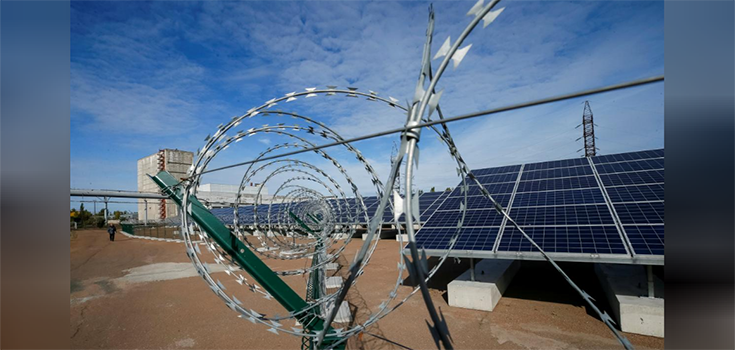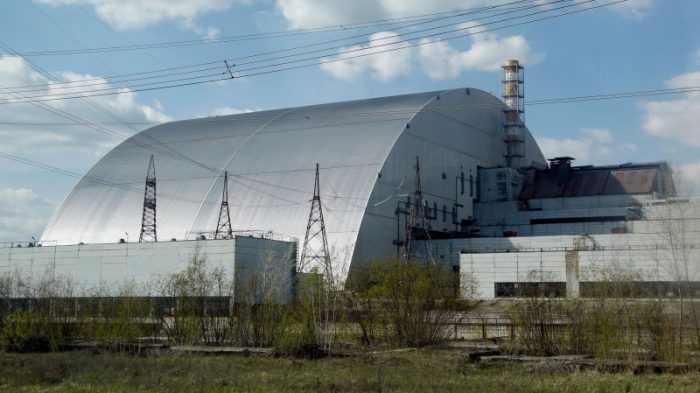Chernobyl Nuke Site in Ukraine is Transformed into Solar Farm

It has been more than 3 decades since the Chernobyl nuclear power plant in Ukraine melted down, causing the worst nuclear accident in history and claiming the lives of thousands over the years. Now, the site has been transformed into a massive solar farm.
The farm stands some 300 feet from the power plant’s remains, which are housed under a massive sarcophagus slid into place in 2016 to contain toxic leaks and radiation. It will be another 24,000 years (the half-life of plutonium) before humans can inhabit the surrounding 1,000 square miles surrounding Chernobyl, but the ghost town has a new purpose.

Evhen Variagin, the chief executive of Solar Chernobyl LLC, said: [2]
“It’s not just another solar power plant. It’s really hard to underestimate the symbolism of this particular project.”
Launched October 5, Solar Chernobyl can power roughly 2,000 homes. The entire project cost a mere $1.2 million to complete. Land prices offered by the Ukrainian government are a steal, and the government will shell out as much as 50% above the European average for power generated there. [1]
Chernobyl continued to crank out nuclear power until it was officially shut down in 2000. This is the first time power has been produced at the site since the turn of the millennium.
Stage 1 of the project encompasses about 4 acres, but authorities have offered up to 6,000 acres (10 square miles) for solar farms. Eventually, as much as 100 megawatts of solar power could be constructed. The site has connections to the power grid, which could one day transmit up to 4,000 megawatts of power.
Investors have until July 2019 to cash in on the subsidy scheme, at which time parliament will vote on whether or not to scrap it. [2]
Yulia Kovaliv, who heads the Office of the National Investment Council of Ukraine, said:
“Investors expect that in the renewable energy sector, facilities launched before 2019 will operate on the current (beneficial) system of green tariffs. And that is why want to buy ready-to-build projects in order to complete construction before that time.”
Sources:
[1] Fortune
[2] Reuters (featured image source) Solar panels are seen through barbed wire at a solar power plant built on the site of the world’s worst nuclear disaster, Chernobyl, Ukraine October 5, 2018. REUTERS/Gleb Garanich
